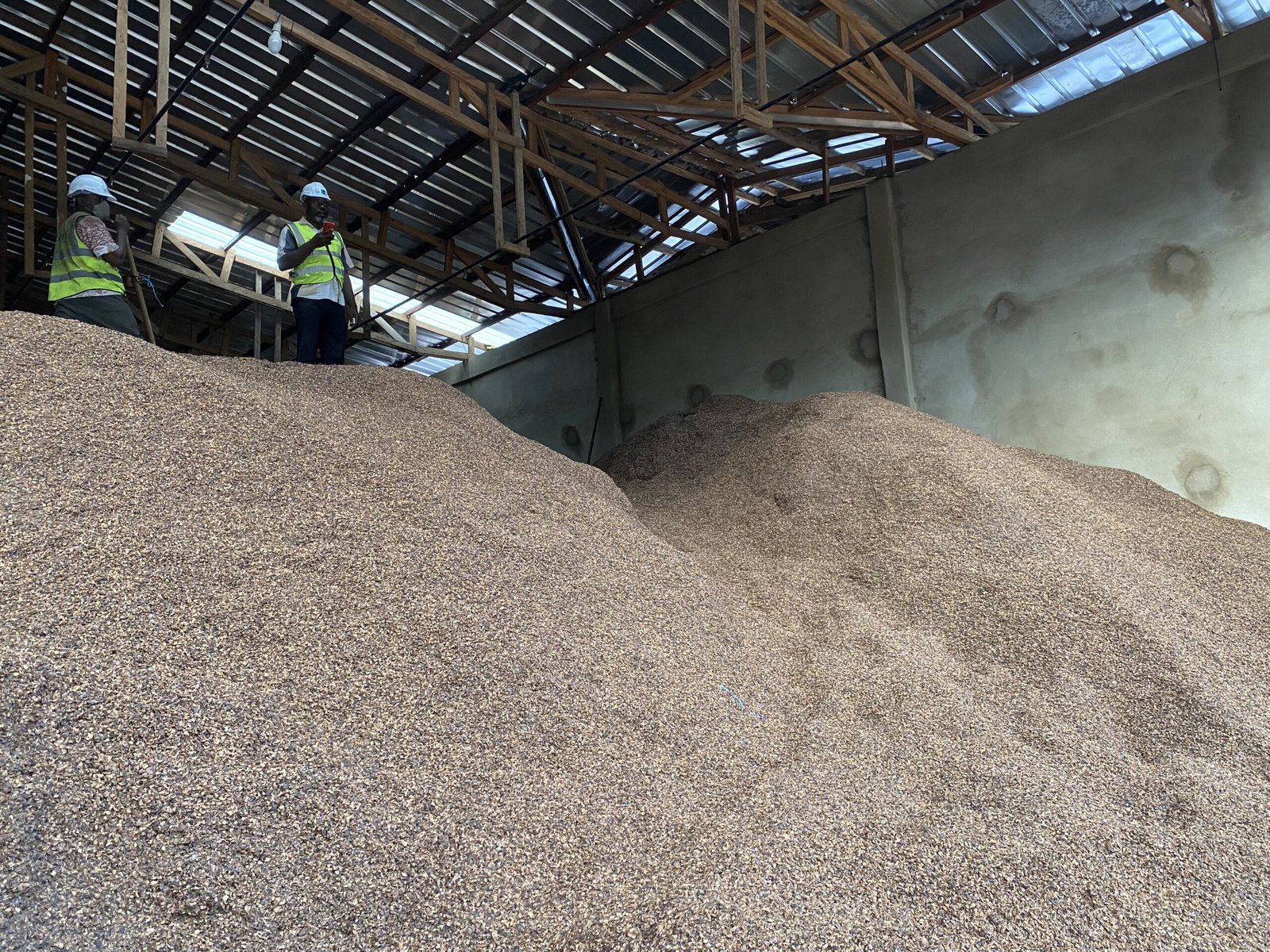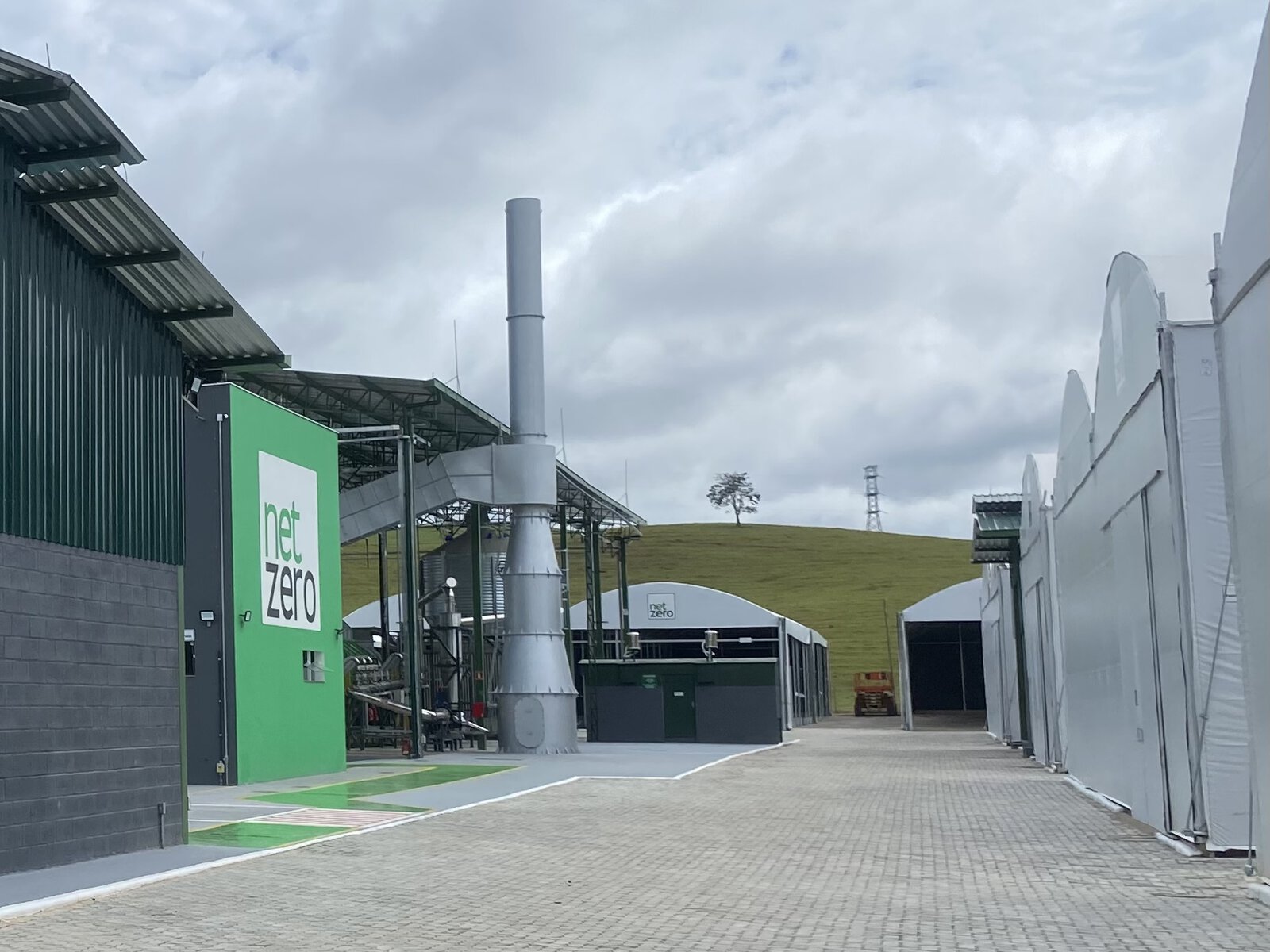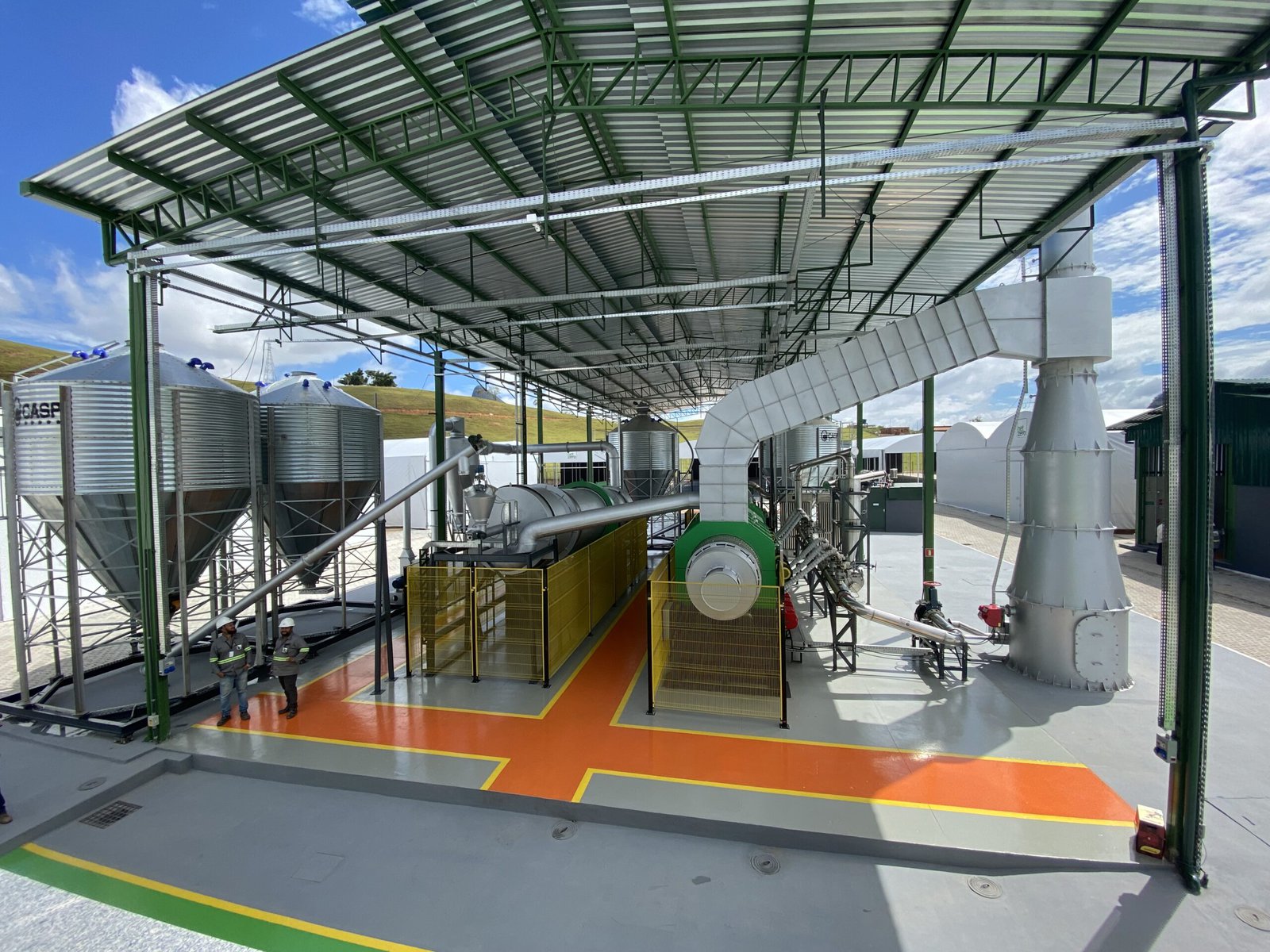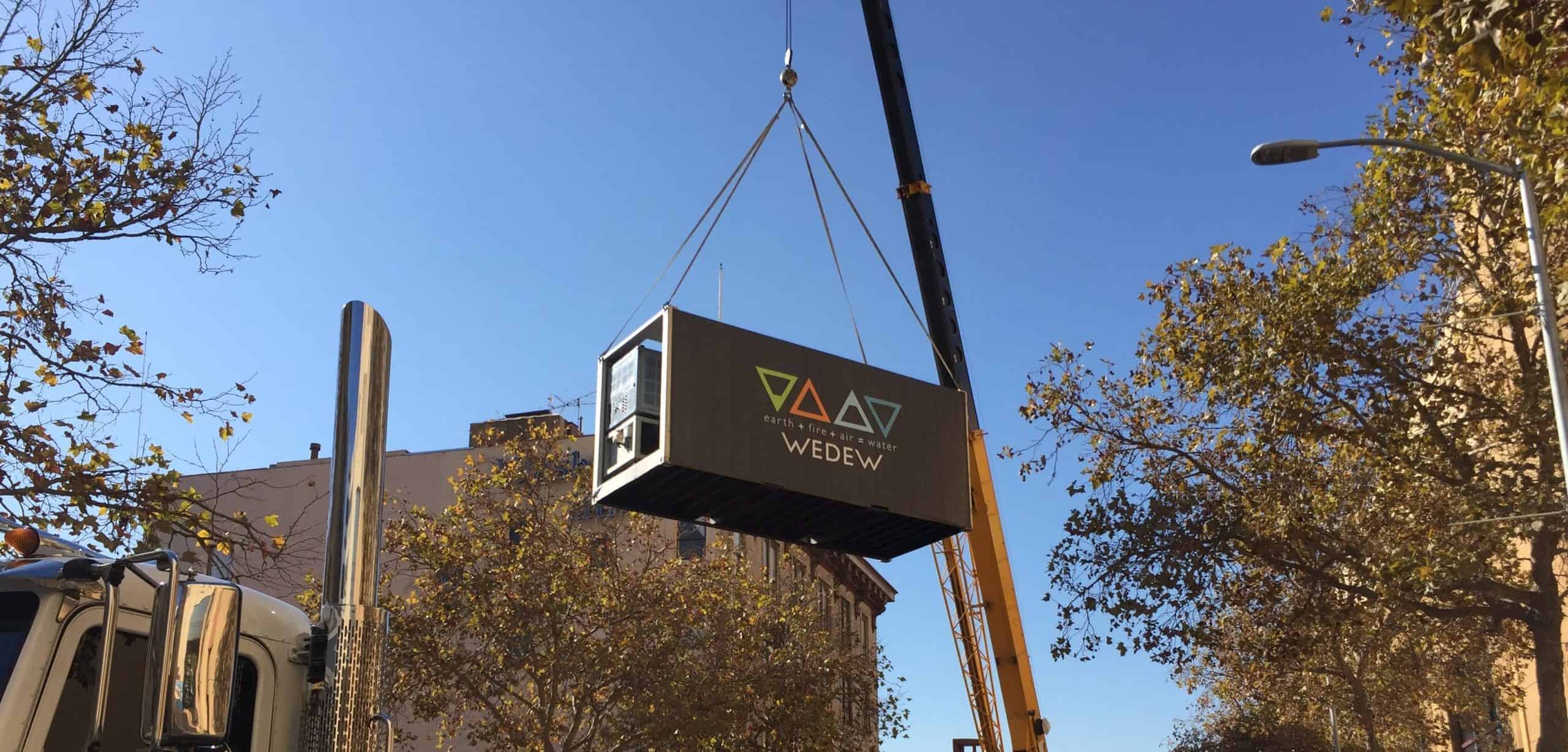The waste coffee husks that come out of Synergie Nord Sud (SNS), Cameroon’s largest coffee-processing plant, are no longer left to gradually decompose in a landfill.
Instead, these tons of biomass are now transported to a nearby facility where they are turned into a wonder material that could be key to mitigating climate change. It’s called biochar, and its multitude of climate benefits — improving soil fertility, producing green energy, reducing waste, and, most significantly, sequestering carbon from the atmosphere — have many scientists describing it as the most advanced, mature method of CO2 removal we have today.
“It has all these co-benefits,” says Axel Reinaud, founder and CEO of NetZero, which runs the facility. “They are really complementary and it’s interdependent… . When it comes to carbon removal, it will be the first solution to reach scale.”
The production of biochar is an ancient farming practice dating back thousands of years to the fertile Terra Preta soils in Brazil. A kind of black powder, it is made by heating up organic matter such as wood chips, manure, leaves, or indeed coffee husks, in the absence of oxygen (to prevent its combustion, which would emit CO2) in a process known as pyrolysis. The creation of biochar removes CO2 from the atmosphere, and in doing so, turns the natural decay of organic matter into a carbon-negative process.

For that reason, in 2018 the Intergovernmental Panel on Climate Change classified biochar as a “negative emissions” technology – the type of process it considers essential if humanity is to limit global warming to 1.5°C above pre-industrial levels, which would help avoid the worst climate disasters. Of the estimated 10 gigatons of CO2 that we need to remove from the atmosphere each year, biochar could take up 1.36 to 3 gigatons.
A wealth of other research underlines biochar’s benefits. A study in 2010 found that 12 percent of global greenhouse gas emissions could be offset with biochar, which has the potential to store carbon for more than 1,000 years when buried underground. More recently, a study found that by deploying biochar, China, the world’s biggest emitter of greenhouse gasses, could produce all staple crops nationwide at net-zero emissions. Researchers in 2022 also found that mixing wood biochar with cattle manure can cut methane emissions — a huge contributor to climate change — by an astonishing 79 percent.
“It’s a cause for great hope,” says Kathleen Draper, board chair of the International Biochar Initiative, a nonprofit organization that provides training and publishes industry standards for the use of biochar. “The industry has grown rapidly over the past years. But knowledge, particularly among the public, remains low.”
Beyond addressing climate concerns, biochar’s other benefits, such as providing an alternative to damaging peat mining and improving soil fertility, could reach far and wide – including for the world’s estimated 500 million smallholder farmers, many of whom grapple with low-quality soil and drought.
In 2021, a review of about 300 biochar studies found it increased average crop yields from 10 to 42 percent, reduced concentrations of heavy metals in plants by 17 to 39 percent, and cut nitrous oxide emissions from soil by 12 to 50 percent.
NetZero’s pilot plant in Nkongsamba, western Cameroon, which was opened last year, is Africa’s first industrial-scale biochar facility. Each year the plant produces up to 2,000 tons of biochar, which is distributed to small-scale coffee farmers to help cultivate crops, who in turn then supply the coffee processing factory with beans.
Researchers from Cameroon’s University of Dschang are now carrying out studies on different crops such as coffee, cocoa and corn to find the optimal methods to deploy biochar, which has already helped increase yields by 40 percent. In 2022, the project was certified by Puro.earth, the world’s leading certifier for carbon removal initiatives.
NetZero’s objective is to replicate the model from Nkongsamba on a large scale, so that by 2030, it can remove two million tons of CO2 from the atmosphere each year. The company has said it will build 50 sites in Cameroon by 2030, and it already has expanded into other countries: in April, it opened a facility in Brazil with a capacity of 5,000 tons per year, making it the largest biochar facility in the world using crop residues, with two more set to open in the coming months.

“The advantage of the system in Cameroon is that it is very simple and robust,” says Reinaud. “But we found it required a lot of maintenance and manual labor.”
Now the facility in Brazil has much more automated processes, takes up just half the amount of space than that of Cameroon’s facility for the same output, and sends the energy created through biochar production back to local coffee farmers.
“If we want biochar to grow at scale, we need to have systems that are low-cost to operate and maintain,” adds Reinaud. “To do this scale-up you need a very big industrial solution. But there’s a need to align lots of things. It’s not easy. You can make biochar in your garden, but to do thousands of tons, it’s difficult.”
Other projects are quickly spreading around the world. In March, US representatives introduced the bipartisan Biochar Research Network Act, which would create a national network to study biochar. In Tennessee, the company Glanris is already turning rice husks, the world’s largest agricultural waste, into biochar across two facilities. A Canadian company has raised $38 million to expand its production of low-carbon products such as biochar. Companies in Europe are turning sewage sludge into biochar, a process which is removing micropollutants from the water.

Yet the usefulness of biochar depends on a number of factors, according to Draper of the International Biochar Initiative. Different source materials offer variable rates of carbon sequestration and the process of growing biomass and heating it to produce biochar itself creates variable levels of emissions. “It almost looks all the same, but there are very significant differences in their chemistry,” she explains. Some biochar may not be CO2 negative and some may only store carbon for decades, not centuries.
Other variables affecting its value include the feedstock, expected use for the biochar, technology used and local climate – it is thought to be more effective in tropical zones, where soils are more often poor and acidic, rather than in temperate regions.
“A Ford F10 is great to transport big bricks and lumber, but not great in a Formula 1 race, and yet they are both cars,” says Johannes Lehmann, a professor at Cornell University and expert in soil fertility. “The same goes for biochar. There are many different kinds of biochar, not one alone. And it must be used in the right context.”
The logistics of biochar production also mean that rather than massive centralized facilities, the most workable large-scale deployment will require many thousands of mid-sized plants spread across the world, according to Reinaud. “Processing must be close to the sources of biomass, because it’s difficult to transport and costly.”
Weighed down by negative news?
Our smart, bright, weekly newsletter is the uplift you’ve been looking for.Lehmann agrees that biochar production will need to be developed accordingly. “It’s different from, say, oil extraction, which comes up from one pipe,” he says. “Biochar production is necessarily a distributed enterprise. So if you don’t have 5,000 cows, and a huge amount of manure, it’s probably not very appealing to you. But when it’s in the same spot, it’s a really appealing sustainability proposition.”
That appeal is already being seen, particularly as companies attempt to decarbonize their supply chains. The global biochar market is set to more than double between 2020 and 2028, reaching a value of $365 million.
“There are many technologies being explored, like direct air capture and enhanced weathering,” says Lehmann. “But biochar is the most mature technology available today. It’s the first one out the door. And it’s proven to work.”











